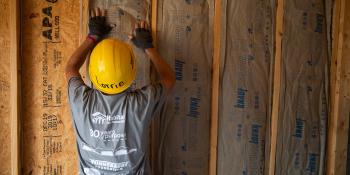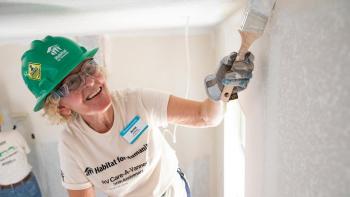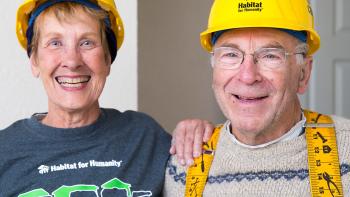
Habitat best practices
Policies that meet or exceed OSHA and Habitat standards for safety
Habitat best practices are policies, procedures, methods or techniques that meet or exceed OSHA standards and align with Habitat for Humanity International policies to safely manage volunteers on a construction site.
You can download a PDF of these best practices. Each local Habitat should adhere to the following to safely manage volunteers on a construction site:
Habitat Competent Person
- Have an Habitat Competent Person on every active job site at all times.
- This person is responsible for the safety of the volunteers on the job site.
Head protection
- Wear hardhats at all times when on an active job site.
Eye protection
- Wear eye protection at all times when on an active job site.
Handrail and stair rail heights
- Put handrails and stair rails at 36-37 inches.
Ladder capacity
- Use only Type IA or IAA capacity ladders.
Using a ladder for access
- Secure the ladder at all times.
Potential fall distance
- Use a 3-foot lanyard or self-retracting lifeline as part of your Personal Fall Arrest System, particularly on single story homes.
Guardrail height
- Set all top rail heights at 42 inches.
Scaffold fall protection
- Provide fall protection when working 6 feet or more above a lower level.
Scaffold access gate
- Use an access gate.
Ladder jack scaffold
- Limit use to platform heights of less than 6 feet.
Ground fault circuit interrupter
- Test the GFCI every working day!


